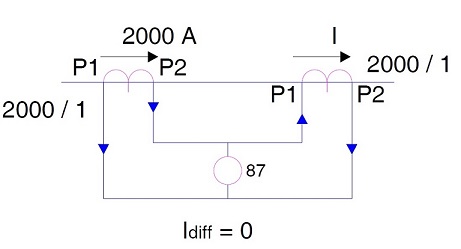Many times I have been asked to justify why to conduct primary current injection test at rated current of circuit? Why to invest money in purchasing Primary Current Injection Kit? This is why I decided to write a topic on the importance of primary current injection test. After reading the topic you will be able to answer the questions.
What is Primary Current Injection Test?
Primary Current Injection Test is useful for high voltage and high current substations or circuits. It is simply flowing of rated current in the circuit being tested. If the rated current of circuit is 2000 A (say), then 2000A of current needs to be flown through the circuit to ensure overall, healthiness of equipment and performance of protection scheme.
Importance of Primary Injection Test
Primary Injection Test is the last commissioning check to ensure that all the equipment and protection schemes are healthy and working as per the design. Connected CTs polarity is checked by Stability Test / Check which can only be carried out with Primary Injection Test.
Stability Test
Let us consider a circuit having differential protection (87) as shown in figure below. The CTs in the circuit are assumed to be of ratio 2000/1. A current of 2000A is supposed to be flowing through the circuit.
Under normal condition there will be no differential current through the relay. This is what we expect. But during commissioning the CTs may have been connected with wrong polarities. In such case, under normal condition there will be a flow of net differential current (sum of individual CT secondary current) through the relay and if this value exceeds the setting value then Differential Protection will operate to trip the breaker. Perhaps this is not expected.
This commissioning mistake may be found out during primary injection test. How? When primary current is flowing through the circuit, meanwhile we can check the differential current in the relay. If the differential current is zero then CT polarities are correct. But if the differential current is equal to sum of individual CT secondary current, this simply means CTs are connected with wrong polarity. We can thus take corrective action before the system becomes operational.
Protection Scheme Test
Protection scheme is generally tested by Secondary Current Inject Test. Secondary Current Inject Test requires less current for testing protection relay functionality. This test is undoubtedly very helpful. But this test does not guarantee the overall connected performance of protection scheme.
Let us take an example. Suppose during commissioning, commissioning engineer made incorrect setting of over current relay to 20% instead of 120%. What will happen?
Obviously the relay will trip as soon as the current through the circuit is more that 20% i.e. 200A (CT ratio is assumed 2000/1 A). This mistake can be found and rectified during primary current injection test.
Next suppose, commissioning engineer made incorrect setting of a relay to 120% instead of 20%. What will happen?
The relay won’t trip during primary current injection test as the rated current is flowing through the circuit. Thus even during fault condition when relay is supposed to trip, it won’t as setting is 120% by mistake. This is a very dangerous condition. Fortunately you can suspect of non-operation of relay when the current through the circuit is more than 20% i.e. rated current and hence check & correct the setting.
Loose Connection
Loose connection can easily be found if there is sparking in the connection / joint provided rated current is flowing during primary injection test. If low current is flowing during the test then it is likely to have no spark.

